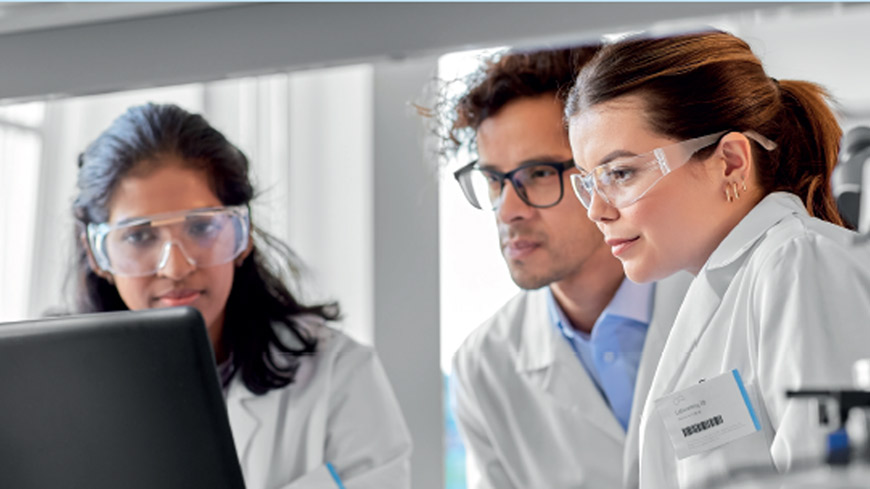Guide to the quality and safety of tissues and cells for human application
Human tissues and cells are used in an increasing variety of ways, from advances in transplantation therapy to medically assisted reproduction. All these techniques have enormous therapeutic benefits for patients or, in some cases, may be the only viable treatment for reclaiming essential functions, for example by restoring patients’ sight or helping them regain mobility. Remarkably, some of these therapies can be also used to help citizens to fulfil their wish to become parents.
Tissues and cells (such as corneas, cardiovascular tissues, bones, tendons, skin, amniotic membrane, gametes, hematopoietic stem cells and other cells) from deceased or living donors help improve the quality of life and save the lives of patients threatened by serious medical conditions. However, the application of these valuable human substances raises many important questions in terms of their safety and quality, and of ethical standards.
The updated 5th edition of the Guide to the quality and safety of tissues and cells for human application provides a comprehensive overview of the most recent advances in the field, and technical guidance to ensure the appropriate quality and safety of tissues and cells for human use. It is intended to provide practical support to professionals involved in all stages in the handling and treatment of tissues and cells, starting from identifying potential donors to clinical application in patients and their follow-up, including:
- professionals involved in identifying potential donors,
- transplant co-ordinators managing the process of donation after death,
- bone marrow and cord blood collection centres,
- fertility clinics,
- tissue establishments processing and storing tissues and cells,
- testing laboratories,
- organisations responsible for human application,
- inspectors auditing the establishments,
- health authorities for tissues and cells for human application.
Download the leaflet for more details on the 5th edition of the Guide to the quality and safety of tissues and cells for human application.
The electronic version of the guide can be downloaded for free online.
The paper version is available for purchase at the EDQM Store.
What has changed in this 5th Edition?
The 5th edition of the Guide to the quality and safety of tissues and cells for human application has been fully revised and updated with the most recent developments in the field of tissues and cells.
In this edition, the presentation of mandatory and recommended practice has been systematised through a revision of the use of the terms “must” and “should”. The requirements documented in the guide represent the agreed opinions of experts in the field of tissue and cell banking on what they consider the safest and most effective protocols, based on documented evidence, scientific principles and their professional knowledge and experience. Where a requirement is stated to be a “must”, it is based on an EU legal requirement and/or strong documented evidence that supports the application of the requirement to ensure appropriate quality and safety profiles. Thus, “must” indicates “what must be done”. The guide goes further, however, by providing additional technical advice on “what should be done”, based on generally accepted good practices, expert opinion, relevant literature and recommendations arising from many international projects.
The guide also provides explanatory and background information to clarify the underlying rationale (the “why and how”), which can also be taken into account when considering policy decisions and educational initiatives.
The 5th edition of the guide is divided into four parts.
Part A (Chapters 1-18) covers general requirements applicable to all tissue establishments and organisations involved in the donation, procurement, testing, processing, preservation, storage and distribution of tissues and cells. All chapters have been extensively revised and updated, incorporating all new developments in the field. Some of the main changes in this part are detailed below.
- The former Chapter 2 (Quality management, risk management and validation) has been split into two separate chapters.
Chapter 2, Quality management and validation, has been completely revised and updated. The responsibilities of the Responsible Person and Quality Manager have been defined, and the differences between the various processes within the quality management systems have been clarified.
Chapter 3, Risk management, provides users with a set of risk assessment tools. In addition, a completely new online instrument, the Microbiological Risk of Contamination Assessment tool (dubbed “MiRCA”), has been developed to help procurement organisations and tissue establishments identify potential microbiological risks in novel, existing or modified aseptic processes, and to support decisions aimed at mitigating risks in aseptic processes. This tool is hosted by the EDQM on a dedicated web page (https://soho-guides.edqm.eu/home/) and is intended for use by tissue establishments, fertility clinics, inspectors and Health Authorities in evaluating risks.
- Chapter 5, Donor evaluation, in addition to general guidance on assessing tissue donors, now includes a dedicated section with guidance on undertaking risk assessments in the case of deceased tissue donors with an antecedent or tumour diagnosis (non-haematological and non-CNS tumours).
- Chapter 6, Donor testing – markers for infectious diseases, provides new algorithms for the interpretation of results of tests for HIV, HCV and HBV infectious markers.
- Chapter 7, Procurement, and Chapter 9, Processing, provide thoroughly revised guidance. In conjunction with the MiRCA tool, they allow for an extensive assessment of individual and aggregated risk of contamination factors, which may be used by tissue establishments to decide on and prioritise risk-mitigation actions, and to improve procurement and processing activities.
- Chapter 8, Premises, now contains guidance on environmental monitoring.
- Chapter 10, Storage, formerly a subsection, has been recast as a standalone chapter; it can be read in conjunction with Chapter 12, Release, distribution, import and export.
- Chapter 11, Principles of microbiological testing, has been thoroughly revised to provide more detailed guidance on testing for bacterial endotoxins and bioburden testing, and the validation of efficacy of decontamination with antibiotics. Guidance on the correct use of microbiological test methods described in the European Pharmacopoeia has also been updated. The list of micro-organisms that should result in the discard of grafts (unless treated with a validated sterilisation process) has also been thoroughly revised.
- Chapter 13, Interaction between tissue establishments and organisations responsible for human application, emphasises the need for close co-operation between tissue establishments, organisations responsible for human application and health authorities in responding to the introduction of novel processes and clinical applications in the field of tissues and cells.
- Chapter 17, Biovigilance, has been thoroughly revised to provide real examples of the assessment of serious adverse reactions and events related to the use of reproductive and non-reproductive tissues and cells, for educational purposes.
- Chapter 18, Introduction of novel processes and clinical applications, has been moved to Part A of the guide and aims to outline key elements to be considered when developing and/or authorising novel processes and/or new clinical applications.
Part B (Chapters 19-34) contains specific guidelines and requirements for the various tissue and cell types. Relative contraindications for the acceptance of donors of these tissues and cells have been revised, considering case-by-case scenarios requiring careful risk assessment. A dedicated section on patient follow-up has been included in all relevant chapters. Additional changes include the following points.
- Chapter 25, Umbilical cord blood progenitors, now has new appendices.
- Chapters 26, Pancreatic islets, 27, Hepatocytes, and 28, Adipose tissue, present extended guidance.
- Chapters 29, Medically assisted reproduction, and 30, Fertility preservation, contain new information to provide updated guidance, including a dedicated section on pre-implantation genetic testing in Chapter 29.
- Chapters 31, Human milk, 32, Intestinal microbiota, and 33, Blood components for topical use, have been moved to Part B. While the regulatory status of these substances may vary from country to country, the risks associated with their human origin and the processes applied to donor selection, procurement, processing and preservation serve the same purposes and are analogous to those of the rest of the tissues and cells described in this guide. Without intending to pre-empt any regulatory decisions, these chapters therefore provide a generic quality and safety framework for tissue establishments or any facility dealing with these substances.
- Chapter 34, Tissues and cells as starting material, is new; it provides guidance for authorised tissue establishments on quality and safety aspects, mainly in donation, procurement, testing and distribution of the starting material for further processing for the production of novel therapies involving human tissues and cells.
Part C includes extensively revised Good Practice Guidelines (GPGs) for tissue establishments aimed at promoting high levels of quality in the field of human tissues and cells. GPGs elaborate, from a practical point of view, the key elements to be defined and controlled in achieving comprehensive quality management systems, and should therefore be seen as a complementary document for tissue establishments, inspectors and/or auditors.
Part D comprises tissue and cell monographs. It provides information on well-established tissue and cell preparations and clinical applications that are precisely defined and have been shown to be safe and effective when used in patients. Tissue and cell monographs are complementary to other sections of the guide and can be useful tools for tissue establishments and health authorities, providing the minimum criteria and controls necessary to ensure the quality of tissues and cells processed by tissue establishments.








